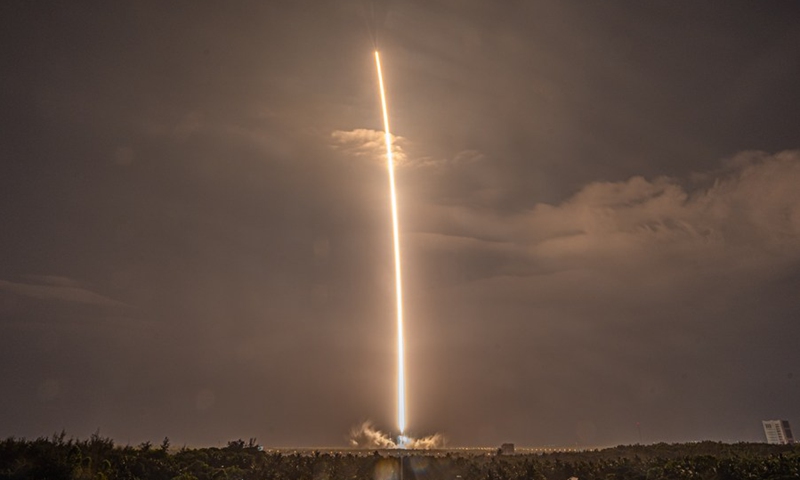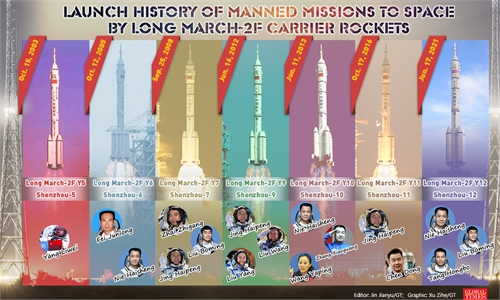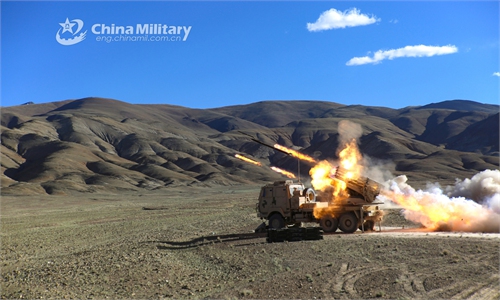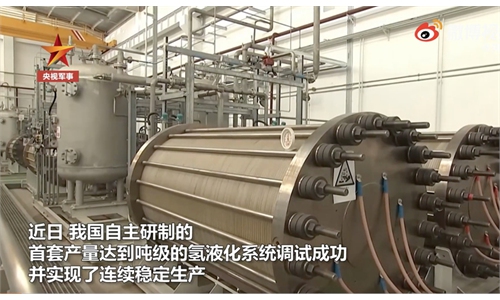China to debut new manned rocket, heavy-lift launch vehicle for moon landings at Airshow China

The Long March-7 Y3 rocket, carrying the Tianzhou-2 cargo spacecraft, blasts off from the Wenchang Spacecraft Launch Site in south China's Hainan Province, May 29, 2021.(Photo: Xinhua)
Coming amid the country's busy yet smooth execution of missions to build its most ambitious manned space project - the China Space Station - the China Academy of Launch Vehicle Technology (CALT), the nation's largest organization for research, development and production of missiles and carrier rockets, will debut a next-generation manned carrier rocket and a heavy-lift launch vehicle, at this year's Airshow China in Zhuhai, South China's Guangdong Province from September 28 to October 3.
The rocket and launch vehicle are expected to support China's manned lunar probes. The next-generation carrier rocket, freshly developed by the CALT, will be the go-to rocket to launch the country's next-generation manned spacecraft.
Consisting of three core stages and an escape tower as well as a nose cone, the rocket is 90 meters long and weighs about 2,000 tons at launch, the Global Times learned from the CALT on Thursday.
It is capable of sending a payload of 25 tons directly into moon transit orbit or a payload of 70 tons into near-Earth orbit, the CALT said in a press release it sent to the Global Times.
It can also combine with multiple modules to formulate a stream of rocket types that can carry payloads of 40 to 70 tons into low-Earth orbit or 10 to 32 tons into geostationary transfer orbit. It can also achieve the reusability of vertical take-off and vertical landing, when using multiple engines in parallel layout, the CALT said.
The new rocket will be used to conduct China's manned lunar probe missions, the CALT noted. It has completed ignition tests of the new pump rear swing high-pressure supplementary combustion engine, the solid adjustable thrust attitude control engine, and the new non-toxic attitude control engine.
The name of the next-generation manned rocket has not been officially disclosed. But many space observers reached by the Global Times speculated it might be called "921 rocket." The number 921 refers to the time when the manned space project was first approved by the state authority 29 years ago on September 21.
Long Lehao, an academician of the Chinese Academy of Engineering and chief designer of Long March rockets, has previously said that such rocket for manned lunar landings will be called Long March-5 DY, an acronym for the Chinese term dengyue, or lunar landing.
Also set to debut in Zhuhai is the heavy-lift launch vehicle, which is speculated to be named Long March-9.
It is developed to be the strongest member of China's launch vehicle family and is designated to execute manned lunar probes, among other deep-space exploration missions, the CALT said.
The feasibility study of the type started in 2010 by the China National Space Agency. The 9.5-meter-diameter rocket has four 5-meter-diameter boosters, with each carrying two 4,800-kilonewton liquid oxygen methane engines, according to the academy.
With three core stages, it can launch payloads of up to 140 tons into new Earth orbit, 50 tons into lunar transit orbit and 35 tons into Mars transit orbit.
It is scheduled to conduct its maiden flight around 2028, the CALT disclosed.
It also added that it will support deep-space exploration missions as well as the building of a moon base, ensuring the country's launch vehicle technology will advance to world-class level by around 2030.




